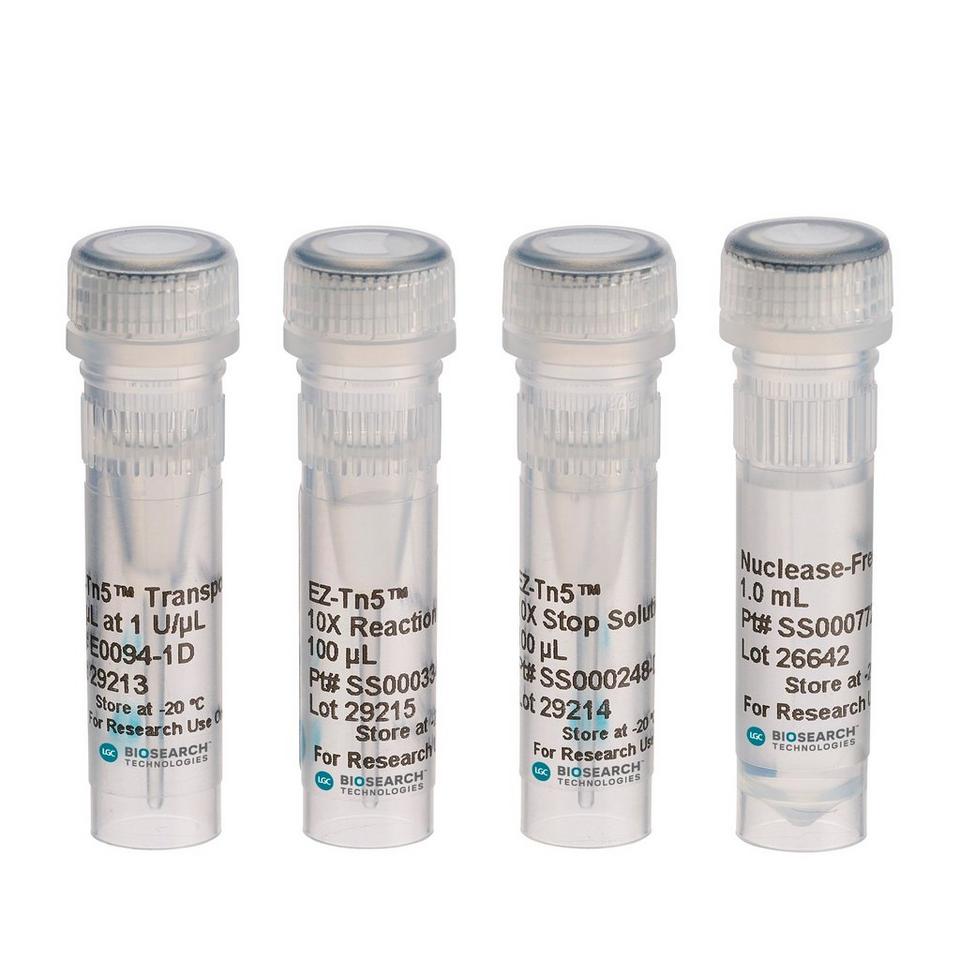EZ-Tn5™ Transposase
EZ-Tn5™ Transposase is a hyperactive form of Tn5 transposase.1 The highly purified, single-subunit enzyme can be used to randomly insert (transpose or "hop") any EZ-Tn5 Transposon into any target DNA in vitro with an efficiency up to >106 insertion clones per standard reaction. When incubated with an EZ-Tn5 Transposon in the absence of Mg2 , a stable EZ-Tn5 Transposome™ complex is formed. The Transposome is so stable that it can be electroporated into living cells. Once in the cell, the Transposome is activated by intracellular Mg2 and the EZ-Tn5 Transposon component is randomly inserted into the host's genomic DNA. The three-dimensional structure of a Transposome complex has been elucidated.2

A typical EZ-Tn5 transposition reaction requires four components: (1) the EZ-Tn5 Transposase; (2) an EZ-Tn5 Transposon; (3) a target DNA; and (4) the presence of Mg2 . The highly random insertion of an EZ-Tn5 Transposon into the target DNA3 proceeds by a cut-and-paste mechanism,1 catalyzed by the EZ-Tn5 Transposase, and results in a 9-bp duplication of target DNA sequence immediately adjacent to both ends of the Transposon.
*Covered by issued and/or pending patents - accept the label licence here:
A typical EZ-Tn5™ transposition reaction requires four components:
- EZ-Tn5™ Transposase
- EZ-Tn5™ Transposon
- a target DNA
- Mg2
Insertion of an EZ-Tn5™ Transposon into the target DNA proceeds by a cut and paste mechanism,1 catalysed by the EZ-Tn5™ Transposase, and results in a 9-bp duplication of target DNA sequence immediately adjacent to both ends of the Transposon.
If you cannot find the answer to your problem then please contact us or telephone +44 (0)1954 210 200